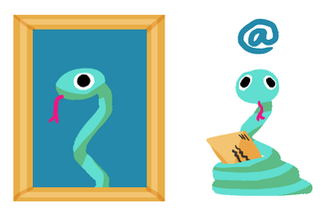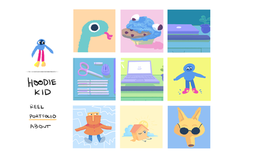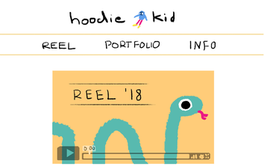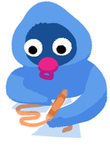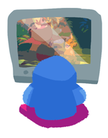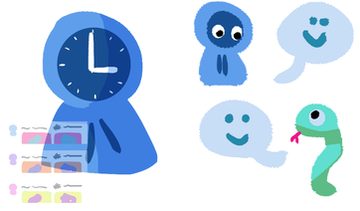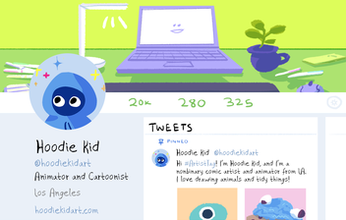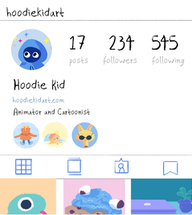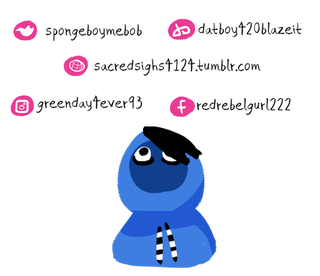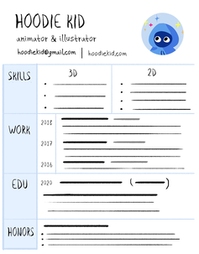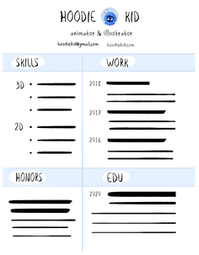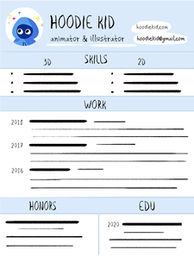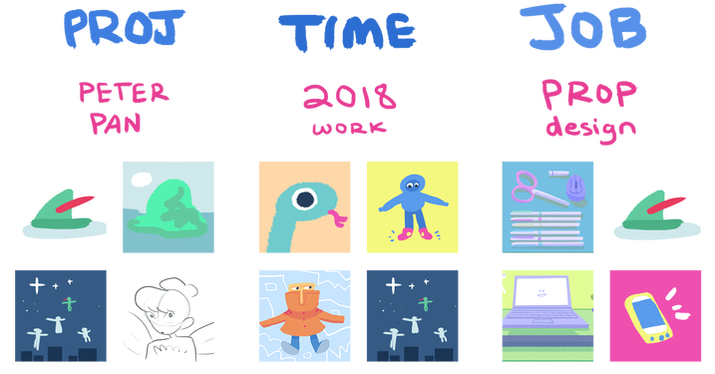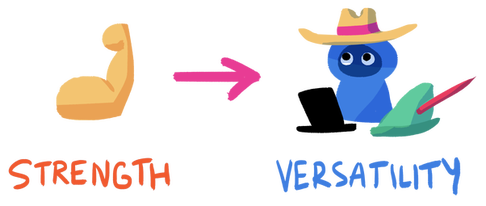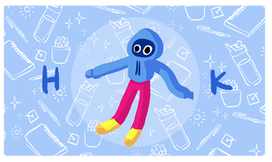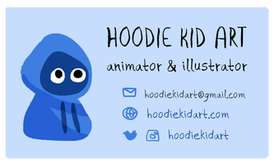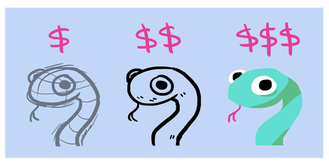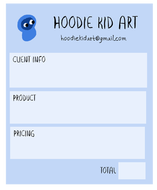|
9/14/2018 0 Comments Professional DocumentsHello again, friends! This post is doubling as a presentation I'm giving at my alma mater university for the Animation and VFX students there. I was invited to give a talk on resumes, websites, and professional documents in general. I decided to make little graphics to put in my presentation. Some of the tips in this post are more specific to animation-based work, but I feel that a good portion of what I cover can be applied to other professional fields and presenting ones' self in a polished manner. DISCLAIMER: The information in this post is a collection of advice I've gathered from industry professionals, workshops, and my own personal experience. Feel free to pick and choose what resonates with you and leave behind what doesn't! WebsitesA website hosts your curated and professional work, including reels, portfolios, and other portfolio links. It also provides a platform for your contact information and social media links. StructureFor free website building, I would suggest Weebly over Wix for free websites. This blog is created on Weebly, along with my portfolio site and travel sites! Squarespace and wordpress are also common, but I have not tried them out myself. Look at websites for professional artists you admire! See how they lay out their information and what info they include! (same goes for portfolios!) Keep your ABOUT ME section professional! Look at example blurbs from other artists! This statement is not original, unfortunately. BUT THAT DOES NOT INVALIDATE THE ORIGIN OF YOUR PASSION! Rather than talking about the earliest days of your interest, consider talking about how your interest in art became a professional endeavor. This will probably lead you to a more unique about me statement. Social MediaPost feed-based current and recent art, sketches, things you'd like to share with others. Interact with other artists and see other current work! StructureConsider having professional and private accounts! Especially if you want to work in children's entertainment, this might be a good idea for you. Use your professional social media accounts for posting artwork and connecting with other artists. Have your private accounts protected and use them...however you want! Beyond filtering out ranting/venting etc, having a professional account means you have a consistent stream of art-related content with no thematic breaks. Once again, this is up to your own personal discretion, and there are many different approaches to managing social media. Posting Habits- Have your own art as your profile picture (at least) and header image if possible! - Make sure at least one form of contact (website, email) is displayed in your description. How you post can make a big difference in the growth of your following. Experiment with when/how/what you post and find what works for you. Below are some tips from a comics workshop I attended, for some soft goals for staying active in the algorithms! USERNAMESA username is a consistent way to identify yourself and what you do/make across multiple forms of media. StructureShort and specific does the trick! JaneDoeArt / JaneDoe / JaneDoeDraws / JaneDoeAnimates -- something with your first/last name is a solid start for username ideas. If you already have an artist handle or moniker, use that! Consider adding art/draws/etc onto it to connect the account to the kind of content you post. Identity & Profile DescriptionsPut some time and consideration into what username you choose. It's okay to not know what you want to do yet. It's okay to not have the perfect label for your profession! Many social media sites allow you to change your username.
EmailsResumeResumes show work experience, education, proficiencies, any honors, and contact information. Even if the job isn't in the art field, connect how it makes you a good EMPLOYEE. StructureI suggest gathering all of your information as a plain text document. Then, draw some thumbnails and play around with the space certain sections take up. If possible, try out photoshop for non-linear text arrangement and fine-tune your spacing. If you don't have access to photoshop, consider using text boxes in Google Docs rather than inline text. Also, don't be afraid to change parts of your resume structure based on where you're applying.
XP / Skills Bar Charts ...
InterestsInclude an interest section at your own risk! The point of an interest section is to show your versatility or give a taste of your personality/hobbies. So, interests you include should be activities outside or adjacent to your art career. Be sure to be specific and concise! PortfolioA portfolio demonstrates the work you have created that best showcases your skill towards a specific profession or ability. RARELY does one portfolio work for every purpose! Don't be afraid to make multiple versions tailored to what you're applying for.
Reels A reel shows work that needs to be turned around (models) or viewed in motion (animation) Here are some tips from my Pixar portfolio review:
StructureMy advice when it comes to structure is to arrange your artwork from what greatest shows YOUR STRENGTH in your PORTFOLIO FOCUS to what best shows your VERSATILITY.
InterviewsInterviews are a chance for you to showcase your interpersonal skills and preparedness for a potential job. They may be done in person, on the phone or over video chat. Structure
Find ways to talk about studio properties in a passionate, but professional way! Especially in entertainment, studios like to hear that you're a fan of their properties. For some studios, participation in their content (like games) is a huge bonus in their consideration. It's important to show enthusiasm for the job you're interviewing for and the content that job will interact with. However, the pitfall in entertainment (especially children's entertainment) is speaking in a manner that is more fitting of a fan than a professional artist. My biggest recommendation for this situation is to think critically before an interview about why, as an artist, you connect with certain media. Being able to point out an aspect of production that makes you enjoy a certain show or game can be helpful to tie this down. Regardless, try your best to read the room and the energy when you start an interview! Some interviews will feel very formal, and others less so. Being prepared with the kind of questions you may answer will help to adapt to either situation. Business CardsStructure
Invoices & PricingA pricing sheet provides a CLEAR REFERENCE for yourself to calculate the labor of your own work and how much you charge for said work. Some people post their pricing publicly, and others only share pricing upon quote inquiries. Your pricing sheet should be updated regularly. An invoice is a document of the transaction occurring between you and your client. It is your place to make all stipulations of your work order explicitly clear. Invoices create a source of accountability for both the artist and the client. Structure
Regardless of whether or not you share your commission prices online, I'd suggest making your own personal guide for how you price your work, be it an hourly rate, rate per characters, color for illustration, etc. Use this guide as a reference to make sure you price yourself fairly. For commissions, I have my own invoice form I fill out and send to clients. I also highly suggest Mishlist, which allows you to make several commission types for people to submit via the website. Money processing services like Paypal also have their own invoice-makers. It is worth it to get used to documenting and keeping track of your freelance work early on! ConclusionThis was a lot to cover! If you made it to the very end, congrats! I hope some of you reading this found this information useful, or at least interesting. As I said in my disclaimer at the beginning, there are many different ways of going about professional documents. To me, there is something very satisfying about making a cohesive set of work that showcases professional skills to the world. The art and animation communities are very unique, so if you have an insight you'd like to share with me, feel free to send me an email! MORE STUDENT RESOURCES HERE!
0 Comments
Your comment will be posted after it is approved.
Leave a Reply. |

